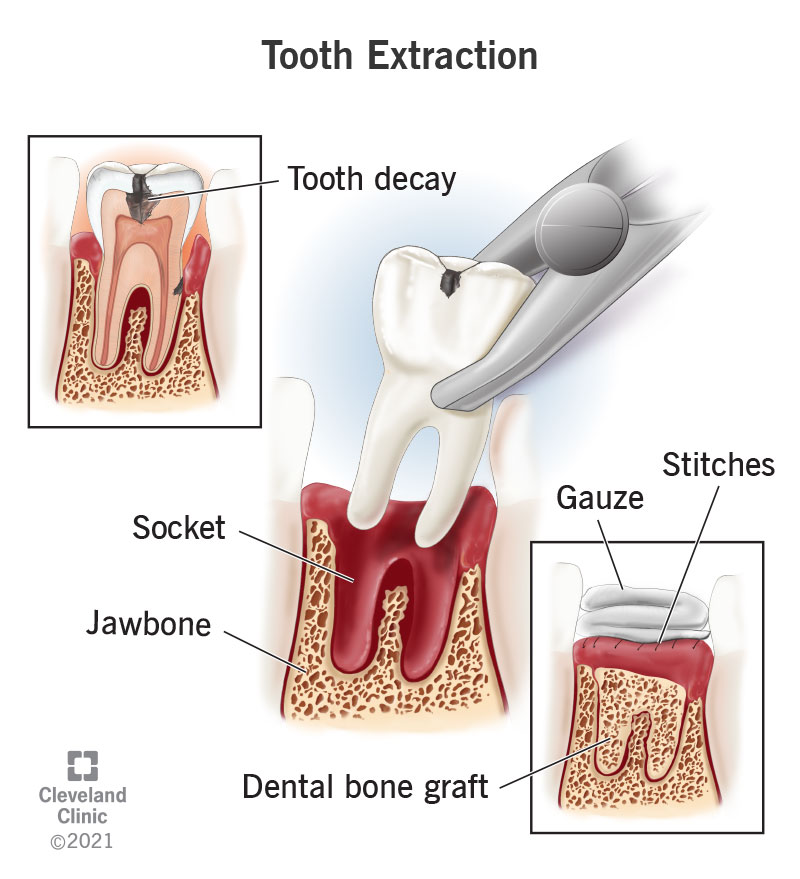
A tooth extraction may be necessary for many reasons, including severe damage or decay. One of the most common dental procedures, a tooth extraction can eliminate bacteria and improve your overall oral health.
Contents Arrow DownA tooth extraction is a dental procedure during which your tooth is completely removed from its socket. Sometimes, people refer to this as “pulling" a tooth.
Cleveland Clinic is a non-profit academic medical center. Advertising on our site helps support our mission. We do not endorse non-Cleveland Clinic products or services. Policy
Healthcare providers prefer to save natural teeth whenever possible. But sometimes, other restorative methods — such as dental fillings or dental crowns — aren’t enough. If your tooth has been badly damaged past the point of repair, then removal may be necessary. Your dentist may recommend tooth extraction if you have:
Dentists and some dental specialists — such as oral surgeons and periodontists — can perform tooth extractions. While general dentists perform plenty of extractions, more complex cases are usually referred out to oral surgeons or periodontists.
Your dentist will assess your affected tooth and surrounding gums. Your dentist will also take dental X-rays to check bone levels and determine the extent of damage. Be sure to tell your dentist about any medications, vitamins or supplements you’re taking. Once all information is gathered, treatment and sedation options will be discussed with you in detail.
Many healthcare providers offer sedation during tooth extractions and other dental procedures. Sedation is an excellent option for people who have dental anxiety — or for those who simply want to be more comfortable during their appointment. Sedation medications used in dentistry include:
In some instances, your dental provider may recommend general anesthesia in a hospital setting. This option is usually reserved for complex cases, such as facial reconstruction or corrective jaw surgery.
First, local anesthesia is given to numb your affected tooth and surrounding gum tissue. Using specialized dental instruments, your dentist will gently loosen your tooth and carefully lift it from its socket. Sometimes, your dentist might need to make incisions in your gums to access your tooth — especially if your tooth is badly decayed or has broken off at the gum line. Once your tooth is removed, the socket is cleaned and disinfected. In some cases, your dentist may also place a dental bone graft, which helps prevent bone loss in your jaw. Finally, stitches may be placed to help promote healing.
When the procedure is complete, your dentist will place a piece of gauze over the extraction site and ask you to close down with firm, steady pressure. This helps slow bleeding so a blood clot can form. (Clotting is a normal aspect of recovery. It promotes healing and reduces the risk of dry sockets.) You’ll take the gauze out once the bleeding has slowed enough. You may continue to have light bleeding throughout the first 24 hours.